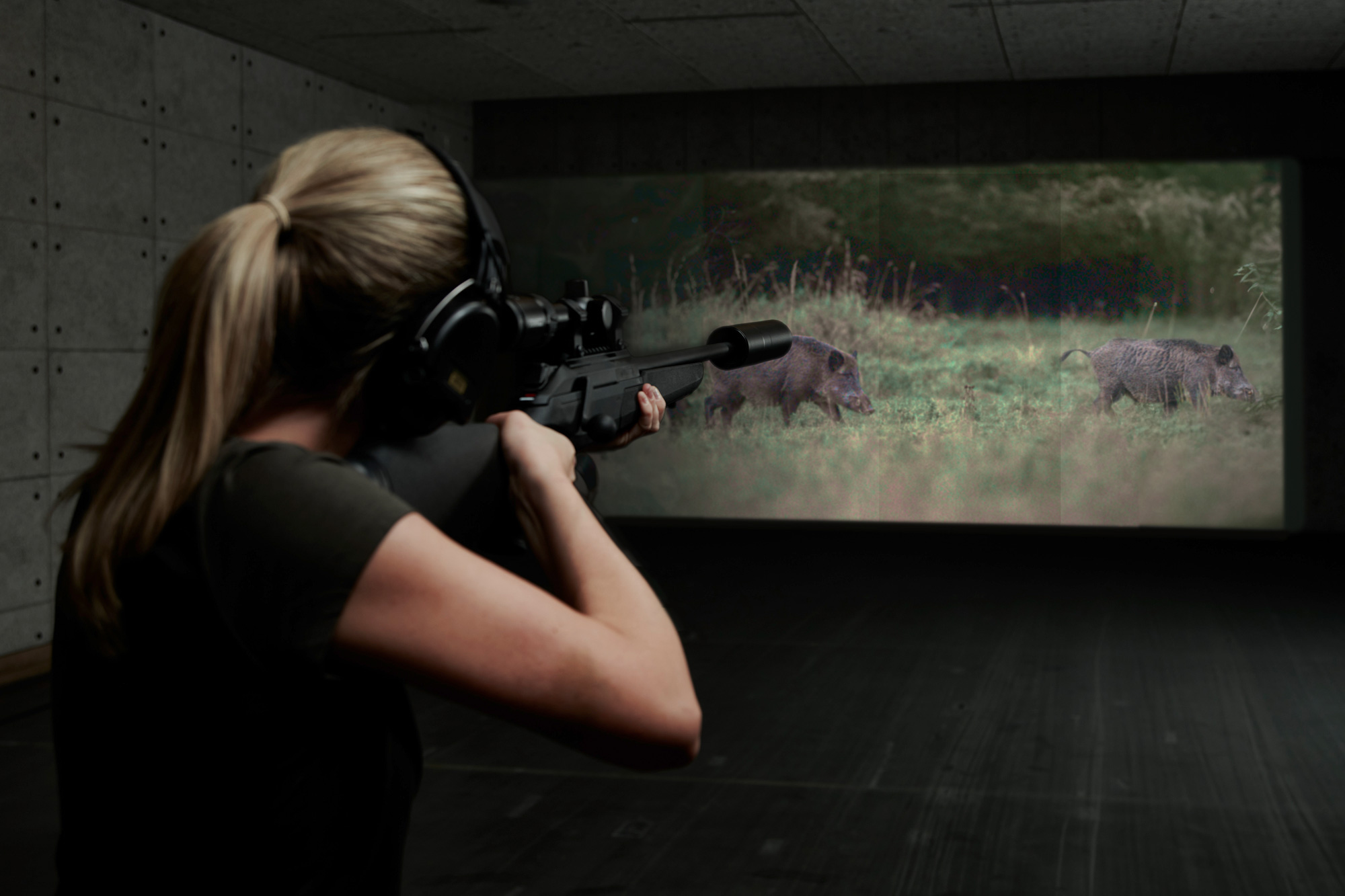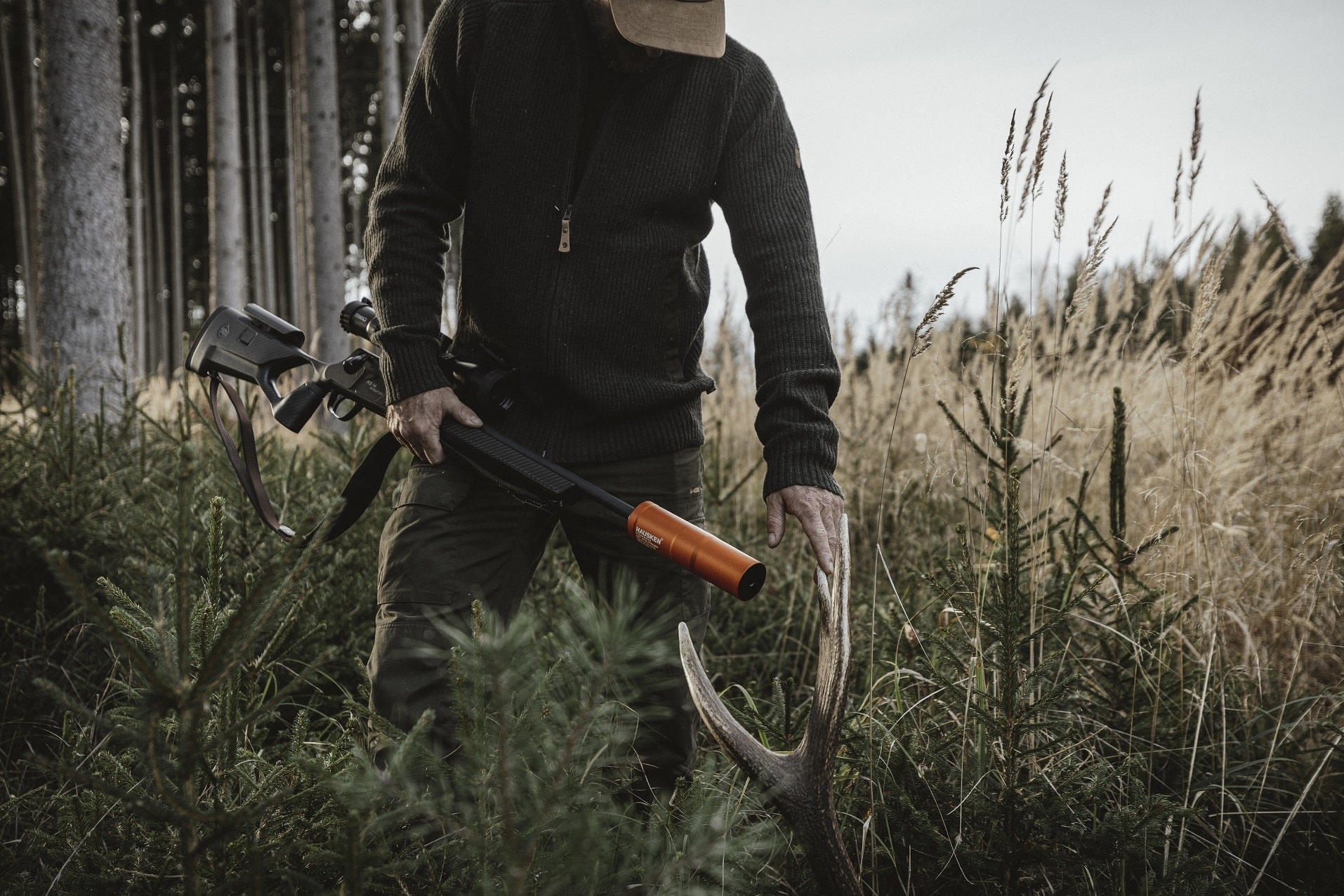Like all technical devices that are exposed to enormous mechanical and thermal stress, silencers are naturally also subject to wear. And similar to the engine in your car, you can also counteract wear and tear here if you maintain these devices regularly. But before we get into the subject of cleaning and maintenance, here are a few basic tips "from practice for practice" on handling gun suppressors so that you can enjoy your "quiet friend" on the hunt for a long time to come.
Practical tip 1 – Avoid to shoot it when it's hot: Treating a silencer with care, or rather with care for the material, also means that you should not shoot it when it's too hot. Particularly in shooting cinemas, you should therefore give it enough time to cool down again after each series of shots before: for example, let the next pack of sows run up on the screen. How quickly a silencer heats up depends on various factors. Firstly, there is the combination of caliber, barrel length and silencer volume. Larger expansion chambers have therefore become established for magnum calibers. The material from which the silencer is made also plays a role. A silencer with an aluminum core generally tolerates less heat than one made of steel or even titanium, such as the Jakt JD224 Hybrid Titan from the Norwegian manufacturer Hausken, which we have already tested extensively for you here at all4hunters.
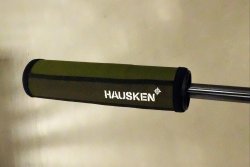
Practical tip 2 – Protect silencers from mechanical damage: Mechanical protection is provided by so-called sleeves, i.e. textile covers that can be slipped over the silencer, which not only protect the jacket tube from scratches and dents, but also offer other advantages. According to the manufacturer, the Quick-Sleeve from RWS, for example, increases the noice reduction performance by at least 2 dB and also prevents the heat shimmer of a hot-shot silencer, so that you have a clear view through the scope for longer with the Quick-Sleeve than without it. It also prevents you from burning your fingers on the hot silencer and helps to avoid unwanted noises – for example when bumping the silencer in a tight blind. However, it is better to remove the Quick Sleeve during intensive shooting training with long shot strings, as the silencer takes longer to cool down again.

Practical tip 3 – Do not leave the silencer on the gun unnecessarily: There is also a basic rule to follow with regard to your firearm and its barrel – If the silencer is not needed, it should be removed from the gun. This applies both for transport in the case after use in the hunting ground or on the shooting range and for storage in the gun cabinet. The powder residues are hygroscopic, i.e. they attract the water vapour present in the air – i.e. humidity – and combine with it to form a sulphurous acid. The sulphuric acid can then attack not only the inner workings of your silencer, but also the metal of the gun barrel under certain circumstances. To prevent such corrosion damage from the outset, you should always dry the silencer as well as possible before you lock it in the safe, unscrewed from the gun as already mentioned.
Practical tip 4 – Only store absolutely dry silencers: You can place the silencer on a warm radiator or in the sun to dry it. As an alternative to passive drying, you can use a hair dryer, a fan or even a shoe dryer. If you blow the silencer dry with a compressor, it should ideally have a water separator so that you do not blow cold, moist air into the suppressor body.
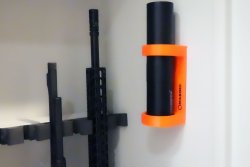
Silencer holders such as the practical Masimo allow easy drying in the gun safe after the hunt
If the silencer is only moderately damp, you can also dry it in the safe. Special holders are available for this purpose, which are designed in such a way that the air can circulate through the silencer standing upright inside. The Masimo silencer holder, for example, which is available to fit almost all silencer diameters, is a practical storage solution that enables ventilation via a "chimney effect". It is available in black or signal orange, with the price range for the Masimo between 29 and 47.50 euros (RRP) depending on the silencer diameter. The Masimo holder has strong magnets and can therefore be positioned anywhere in the safe or on a wall of the steel cabinet. You can also temporarily park the Masimo on the outside of the safe door while you stow away the rest of your equipment after hunting or a visit to the shooting range. During this time, the suppressor can air out and dry a little. The suppressor can then be completely dried in the safe. If you want to be on the safe side here, you can of course also store a dehumidifier in the safe.
When it comes to cleaning, dismantleable models such as the Hausken Jakt silencers offer a number of advantages: we tell you what they are
Anyone who shoots more often or has to clean their silencer more frequently due to other influences should consider whether to opt for a cheaper model that cannot be disassembled or a higher-quality silencer that can be disassembled into its individual parts.
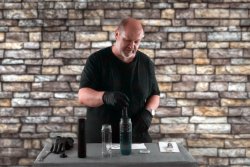
Silencers that can be taken down, such as the Hausken models, can generally be cleaned more thoroughly than those that cannot be dismantled. With a silencer that cannot be dismantled due to its design, the owner only has the option of pouring cleaning fluids into the silencer, which is closed on one side by means of a plug, and allowing it to work, then pouring out the dirty liquid as best as possible and rinsing it several times with plenty of water until only clear water comes out. It is obvious that this takes much more time and water than a model that can be dismantled for cleaning. The parts of a dismantleable silencer, on the other hand, can simply be placed in a bath of a soap solution or, even better, in a special agent such as Liqui Moly silencer cleaner to dissolve powder residues. If you already own such a device as a reloader, you can also clean the silencer in an ultrasonic bath. If not, and you "only" had it in the cleaning bath, you can also treat it mechanically with a plastic brush or a cleaning cloth if necessary, if not all residues have been removed.

Of course, it is easier and quicker to dry the disassembled core and the housing tube after they have been rinsed clean with water. A hair dryer or fan can also help here, alternatively you can also dry the core in the oven at moderate temperatures of 70°C to 80°C, the housing tube can simply be wiped dry inside and out with kitchen towels. However, it is important that all parts are really 100 per cent dry before assembly. A Jakt JD224 Hybrid Titan, for example, does not require any expert knowledge to be taken down, and this can be done with the optionally available Hausken disassembly tool (approx. 20 euros) and a 17 mm ring spanner or open-end spanner by virtually anyone who has ever screwed a nut on and off. And should one of the O-rings installed in the silencer break and needs to be replaced, it can quickly be obtained from the RWS service centre.
How often should a silencer be cleaned and do hunters have to do it themselves?
The cleaning intervals for a silencer naturally also depend on the number of shots fired with it. Anyone who is often out and about in the shooting cinema and fires a lot should regularly dismantle the silencer and check its condition. A silencer must be cleaned at the latest when it has really built up a lot of dirt or is encrusted. For the average hunter, it is usually sufficient to check the silencer once or twice a year – depending on the number of shots – and then clean it thoroughly if necessary.





